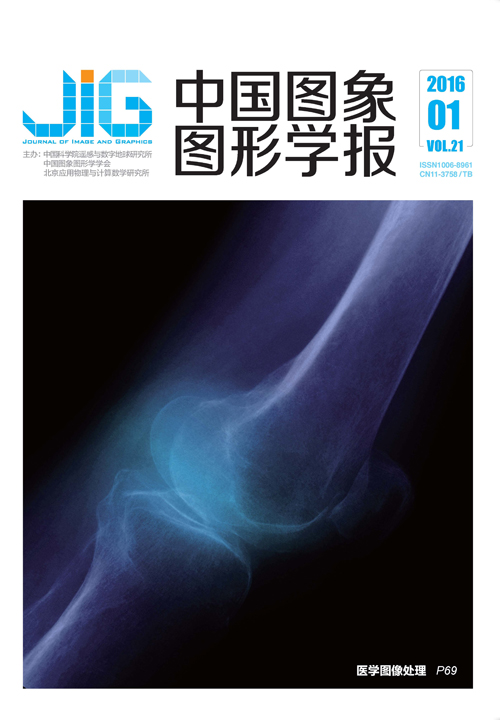
小波-Lagrange方法进行医学图像层间插值
摘 要
目的 医学图像3维重建通常需要进行层间插值.现有的插值方法虽然种类较多,但在进行医学断层图像插值时,很多方法并不能兼顾图像灰度和目标形状的变化,且计算过程过于复杂.鉴于此,提出一种基于小波与Lagrange多项式相结合的插值方法.方法 首先对原始图像进行小波变换,获得图像边缘对应小波系数的位置信息,在断层图像的相应小波系数之间运用Lagrange多项式进行强度和位置插值.结果 通过实验验证,采用本文方法插值得到的图像与线性、Cubic插值方法相比,不仅在灰度值不等点方面减少了10%~50%,均方误差平均下降了3%,而且目标组织轮廓特别是拐角剧烈变化处可改善伪轮廓现象,介于原始断层图像之间,能够满足医学图像层间插值的要求.结论 与线性插值方法、Cubic插值方法相比,新算法由于引入了小波变换这个工具,可将图像剧烈变换部分提取出来,因此,本文方法在处理图像剧烈变化的情况时略有优势.新算法得到的插值图像质量有所提高,计算误差有所降低,可有效用于医学图像目标组织的3维重建.
关键词
Inter-slice interpolation for medical images by using the wavelet-Lagrange method
Wu Shixiang1, Shang Peng2, Wang Ligong1(1.School of Radiation Medicine and Protection, Medical College of Soochow University, Suzhou 215123, China;2.Translational Medicine R&D Center, Shenzhen Institutes of Advanced Technology, Chinese Academy of Sciences, Shenzhen 518055, China) Abstract
Objective In the interpolation process,biomedical images can be converted to isotropic discretedata. Thus, biomedical images are convenient for manipulation and analysis. Inter-slice interpolation is often required for the 3D reconstruction of medical images. Although many interpolation methods have been proposed in published literature,most of these methods do not consider the gray levels and objective shape variation of images. Moreover, the calculation processes of existing methods are relatively complicated. Therefore, an interpolation algorithm based on the combination of the wavelet and Lagrange polynomials is proposed in the current study. Method First, images were decomposed by using wavelet analysis to obtainthe positions of wavelet coefficients that belong to the edges. Second, the Lagrange polynomial was applied to interpolate the intensities and positions between the corresponding wavelet coefficients of the cross-sectional images. Result In this work, the proposed method used three sets of patients' head magnetic resonance images from clinical settings compared with the linear gray-level and cubic interpolation methods.One slice in these data sets is estimated by each interpolationmethod and compared with the original slice by using two measures: number of points of disagreement and mean-squared difference. By using the proposed algorithm, the number of points of disagreement decreased by 10% to 50%, and the mean square error decreased by an average of 3%.The interpolation image smoothed the gray levels and shapes between the original cross-sectional images, thus satisfying the requirements of medical image interpolation. Conclusion Compared with the linear interpolation and Cubic interpolation methods, the proposed algorithm is able to extract the image shape transform with wavelet transform.Therefore, the proposed method has certain advantages in dealing with the rapid changes of sequential images. In this study, the proposed method can ensure high image quality and reduce calculation errors. The interpolated images can be used to efficiently perform 3D reconstruction for the object tissues of medical images.
Keywords
|



 中国图象图形学报 │ 京ICP备05080539号-4 │ 本系统由
中国图象图形学报 │ 京ICP备05080539号-4 │ 本系统由